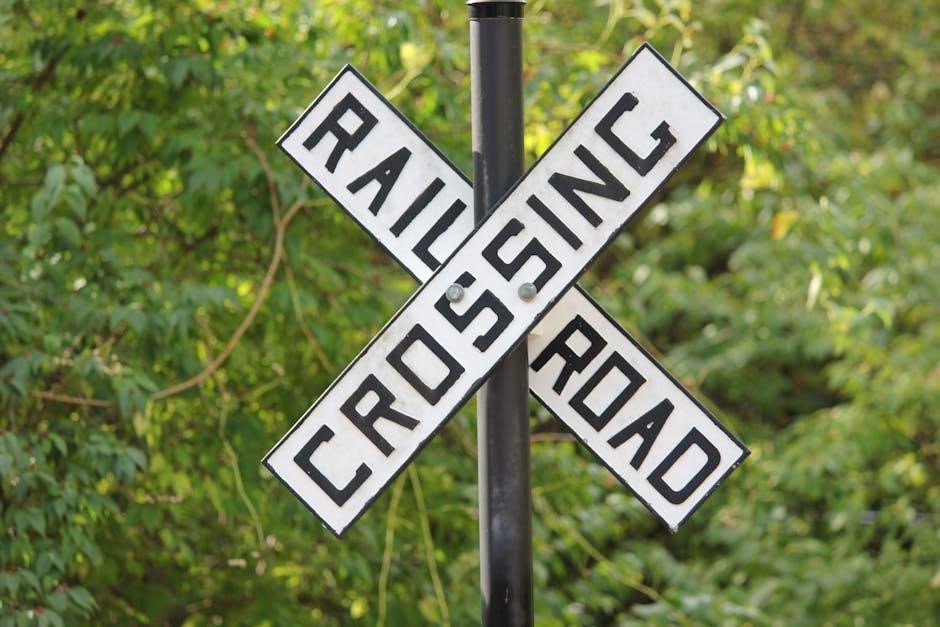Router guide bushings are removable collets that attach to your router’s baseplate, surrounding the bit. They enhance precision and versatility in various routing techniques, ensuring accurate cuts and allowing for edge profiling, dovetail joints, and inlay work.
1.1 What Are Router Guide Bushings?
Router guide bushings are removable collets that attach to the router’s baseplate, surrounding the bit. They act as precision guides, ensuring accurate cuts and proper alignment. Typically made of durable materials, these bushings come in various sizes and are designed to fit specific routers. They consist of a locking nut and a circular flange, which fixes to the router’s base. Guide bushings are essential for tasks like edge profiling, dovetail joints, and inlay work, offering versatility and control in woodworking projects.
1.2 Importance of Guide Bushings in Routing
Guide bushings are essential for achieving precision and consistency in routing. They ensure accurate cuts by maintaining proper alignment with the workpiece, reducing errors and improving overall quality. Bushings enhance versatility, enabling techniques like edge profiling, dovetail joints, and inlay work. They also protect the router from wear and tear by stabilizing the cutting process. For intricate woodworking projects, guide bushings are indispensable, providing the control and accuracy needed for professional-grade results. Their use simplifies complex tasks, making them a vital tool for both novice and experienced woodworkers.

Understanding Router Guide Bushings
Router guide bushings are essential components that attach to the router’s baseplate, surrounding the bit. They consist of a locking nut and another piece with a specific diameter, ensuring precise control during various woodworking tasks.
2.1 Components of a Router Guide Bushing
A router guide bushing typically consists of a locking nut, a guide ring, and a mounting system. The locking nut secures the bushing in place, while the guide ring surrounds the router bit, ensuring precise alignment. Some bushings also include adjustable positions for versatility. The mounting system attaches to the router’s baseplate, ensuring stability. These components work together to provide accurate control during routing tasks, enhancing the overall performance of the router.
2.2 Types of Guide Bushings
Router guide bushings are available in various types, including brass, steel, and phenolic materials. Brass bushings are durable and resistant to wear, while steel bushings offer greater strength for heavy-duty applications. Phenolic bushings are lightweight and ideal for high-speed routing. Adjustable bushings allow for different bit sizes, and solid bushings provide consistent stability. Each type is designed for specific tasks, ensuring precise control and versatility in routing operations. Selecting the right bushing type depends on the material and the desired outcome of the project.
2.3 Compatibility with Different Routers
Ensuring compatibility between guide bushings and your router is crucial for optimal performance. Most bushings are designed to fit standard router baseplates, but sizes can vary. Fixed-base and plunge routers may require different bushing configurations. Measure the router’s baseplate hole diameter and ensure the bushing matches. Some bushings come with adapter rings for universal fitment. Always check the manufacturer’s specifications to confirm compatibility. Proper fit ensures accurate routing and prevents damage to the bushing or router. Compatibility varies, so verify before purchase or installation.

Choosing the Right Guide Bushing
Selecting the right guide bushing involves considering material quality, size, and router compatibility to ensure durability and precision. Proper fitment is essential for accurate routing performance.
3.1 Factors to Consider When Selecting a Guide Bushing
When selecting a guide bushing, consider compatibility with your router model, bushing size, and material quality. Ensure the bushing fits your router’s baseplate and suits your project’s requirements. Check the bushing’s inner and outer diameters for proper fitment with bits and templates; Material durability, such as brass or steel, impacts longevity. Additionally, assess the ease of installation, alignment features, and cost. Consider the type of routing application, like edge profiling or inlays, and whether optional features like anti-vibration are needed.
3.2 Materials and Durability
Guide bushings are typically made from durable materials like brass, steel, or aluminum. Brass is popular for its resistance to wear and versatility, while steel offers superior strength and longevity. Aluminum bushings are lightweight but less durable. High-quality materials ensure consistent performance and reduce wear over time; Choose bushings with a smooth, precise finish to minimize friction. Durable materials also prevent deformation under stress, maintaining accuracy in routing tasks. Always opt for bushings with a rust-resistant coating if using steel models.
3.3 Size and Diameter Options
Guide bushings are available in various sizes to accommodate different routing needs. Common diameters range from 1/4″ to 1-1/4″, with some specialized bushings offering larger or smaller options. The size of the bushing must match the router bit and template being used for precise alignment. Larger bushings provide stability for heavy-duty tasks, while smaller ones allow for intricate details. Choosing the correct diameter ensures accurate cuts and proper fitment. Always measure your router bit and template to select the appropriate bushing size for optimal performance.

Preparing Your Router for Guide Bushing Installation
Ensure the router is clean, calibrated, and free of debris. Inspect the baseplate for damage or wear. Secure the workpiece firmly to prevent movement during installation.
4.1 Checking the Router’s Baseplate
Inspect the router’s baseplate for any damage, dents, or bends, as these can affect the guide bushing’s fit and performance. Clean the baseplate thoroughly to remove dust, dirt, or oil residue, ensuring a smooth installation process. Verify that the baseplate is flat and even, as unevenness can lead to alignment issues. If the baseplate is damaged, replace it before proceeding to ensure optimal results and prevent potential routing inaccuracies.
4.2 Ensuring the Router is Properly Calibrated
Calibrate your router to ensure accurate depth and alignment settings. Check the depth adjustment mechanism to confirm it moves smoothly and locks securely. Verify that the router bit is centered relative to the guide bushing. Use a calibration tool or test cut to ensure the router’s height and alignment match the bushing’s diameter. Proper calibration ensures precise cuts and prevents uneven routing, making the guide bushing function effectively. Regular calibration maintains consistency in your workpiece quality and tool performance.
4.3 Cleaning the Router and Workpiece
Clean the router and workpiece thoroughly before installing the guide bushing. Remove dust, debris, and grease from the router’s baseplate and bit area using compressed air or a soft brush. Wipe the workpiece with a clean cloth to ensure a smooth, even surface. Use a mild solvent if necessary, but avoid harsh chemicals that might damage materials. A clean router and workpiece ensure proper fit and alignment, preventing contamination and ensuring optimal performance of the guide bushing during routing tasks.

Installing the Guide Bushing
Mounting the guide bushing involves attaching it securely to the router’s baseplate, ensuring it’s tightly fastened with screws or clips provided. Proper alignment and a clean, dry surface are crucial for optimal performance and accuracy in routing tasks.
5;1 Attaching the Guide Bushing to the Router
To attach the guide bushing, align it with the router’s baseplate mounting holes. Secure it using the provided screws or clips, ensuring a snug fit. Tighten firmly to prevent movement. Proper alignment is critical for accurate cuts. Use a wrench or screwdriver as needed, and double-check the fit before proceeding. A secure attachment ensures stability and precision during routing operations.
5.2 Securing the Bushing with a Locking Nut
After attaching the guide bushing, use a locking nut to ensure a secure hold. Tighten the nut firmly with a wrench to prevent any movement during routing. Avoid over-tightening, as this could damage the bushing or router. Check the router’s manual for specific instructions. Apply a small amount of grease to the threads for lubrication and to prevent rust. Test the bushing by gently tugging it to ensure it’s stable. Proper securing ensures accurate cuts and prevents potential safety hazards. Always double-check the fit before routing.
5.3 Testing the Bushing for Proper Fit
After securing the bushing, test its fit by gently moving the router across a test workpiece. Ensure the bushing aligns perfectly with the edge guide or template. Check for any wobble or play, as this can affect accuracy. If misaligned, adjust the bushing slightly and retest. Sand lightly if necessary to achieve a smooth fit. Proper alignment ensures precise cuts and prevents errors in your routing projects. Always verify the fit before starting your final workpiece to guarantee optimal results and safety.

Adjusting and Aligning the Guide Bushing
Adjusting and aligning the guide bushing ensures precise cuts and prevents errors. Use shims to fine-tune alignment. Test on scrap wood to verify accuracy. Ensure compatibility with router bits. Always follow safety guidelines to avoid accidents. Refer to the router’s manual for specific adjustment instructions. Proper alignment enhances routing accuracy and ensures safety.
6.1 Setting the Bushing for Accurate Routing
To set the bushing for accurate routing, begin by securely attaching it to the router using the locking nut. Tighten it firmly with the appropriate tool. Next, align the bushing with the router bit, ensuring it is centered for precise guidance. Use shims if necessary to fine-tune the alignment. Test the setup on scrap wood to verify accuracy. Adjustments can be made by turning the bushing clockwise or counterclockwise. Ensure compatibility with different router bits, as the bushing setup may vary. Always refer to the router’s manual for specific instructions. Proper alignment enhances routing accuracy and ensures safety. Regularly clean and maintain the bushing to prevent wear and tear. Always wear safety goggles and keep hands away from the router bit during operation.
6.2 Using Adjustment Tools for Precision
For precise alignment, use adjustment tools like hex keys or wrenches to fine-tune the guide bushing. Loosen the locking nut slightly to allow movement, then adjust the bushing to align with the router bit. Tighten the nut firmly once the desired position is achieved. Use shims if needed for exact positioning. Always test adjustments on scrap wood to ensure accuracy. Proper use of adjustment tools ensures consistent cuts and prevents misalignment. Regularly inspect tools for wear and maintain sharp edges for precise control. This step is crucial for achieving professional-grade results.
6.3 Fine-Tuning the Bushing for Optimal Performance
Fine-tuning the guide bushing ensures precise cuts and enhances overall performance. Start by making small adjustments to the alignment, using a hex key or wrench for subtle shifts. Check the fit against the template or workpiece, ensuring no gaps or misalignments. Use shims if necessary for perfect alignment. Test cuts on scrap wood to verify accuracy. Repeat adjustments until the desired precision is achieved. Fine-tuning is critical for consistent results and prevents errors in critical projects. Proper adjustments ensure smooth operation and extend the bushing’s lifespan.

Using Guide Bushings for Various Routing Techniques
Guide bushings enhance precision and versatility in routing, enabling accurate edge profiling, dovetail joints, and intricate inlays. They ensure consistent cuts and improve overall project quality significantly.
7.1 Edge Profiling with Guide Bushings
Edge profiling with guide bushings allows for precise and consistent edge shaping on workpieces. By attaching a bushing to the router, users can effortlessly create decorative edges, such as roundovers or ogees. The bushing guides the router bit along the edge, ensuring smooth, accurate cuts. This technique is ideal for furniture making, cabinetry, and decorative woodworking projects. Proper alignment and steady movement are key to achieving professional-looking results. Regular cleaning and lubrication of the bushing ensure optimal performance and longevity.
7.2 Dovetail Joints and Precision Cutting
Guide bushings are invaluable for creating precise dovetail joints, ensuring accurate and consistent cuts. The bushing guides the router bit along the workpiece, allowing for clean, angular cuts essential for strong joints. When cutting tails and pins, the bushing maintains exact alignment, preventing errors. This level of precision is crucial for professional-grade woodworking. By applying steady, consistent pressure, users can achieve flawless dovetail joints. Regular use of guide bushings enhances the quality and finish of intricate woodworking projects, making them indispensable for craftsmen seeking perfection.
7.3 Inlay Work and Lettering Applications
Guide bushings are essential for precise inlay work and lettering, enabling smooth, controlled cuts. They help create intricate designs by maintaining consistent spacing and depth. For inlays, the bushing guides the bit to carve recesses perfectly sized for the material. In lettering, it ensures even spacing and alignment, producing professional-looking text. The bushing’s stability is crucial for detailed, high-precision tasks, making it a must-have tool for craftsmen and woodworkers aiming for flawless results in decorative and intricate projects.

Safety Precautions When Using Guide Bushings
Always wear safety goggles and gloves when using guide bushings. Ensure the workspace is clear of debris and properly lit. Avoid using metal objects near the bushing to prevent damage or sparks. Keep loose clothing tied back and ensure the router is stable before operation. Regularly inspect the bushing for wear to prevent accidents during use. A clean, organized workspace reduces risks and enhances safety.
8.1 Ensuring Proper Safety Gear
Always wear safety goggles to protect your eyes from flying debris. Use gloves to maintain a firm grip and prevent cuts. A dust mask is essential to avoid inhaling particles. Ensure loose clothing is tied back to prevent entanglement with the router. Wear sturdy footwear, like steel-toe boots, for added protection. Proper safety gear ensures a safe working environment and reduces the risk of accidents while using guide bushings with your router.
8.2 Avoiding Metal Hammer Strikes on Bushings
Metal hammer strikes can damage guide bushings, causing misalignment or breakage. Always use plastic or rubber mallets for tapping or adjusting bushings. Store tools securely to prevent accidental drops. Ensure the router and bushing are firmly fixed before use. Avoid using excessive force, as it can lead to bushing deformation. Protect your investment by handling tools with care, ensuring precise and safe operation while routing.
8.3 Maintaining a Clean and Stable Work Environment
A clean and stable workspace is crucial for precise routing. Regularly vacuum dust and debris to prevent interference with the guide bushing. Secure the workpiece firmly to avoid movement during operation. Keep tools organized to minimize clutter and reduce tripping hazards. Ensure the router and bushing are free from sawdust for optimal performance. A well-lit and tidy area enhances visibility and reduces accidents, promoting safer and more accurate routing results consistently.
Maintenance and Care of Guide Bushings
Regular maintenance ensures guide bushings perform optimally. Clean bushings after use to prevent dust buildup; Store them in a dry place to avoid rust. Proper care extends lifespan and prevents damage, ensuring precise routing results every time.
9.1 Cleaning and Lubricating the Bushing
Regular cleaning and lubrication are essential for maintaining guide bushings. Use compressed air or a soft brush to remove dust and debris from the bushing and baseplate. Apply a light oil or silicone spray to moving parts to prevent corrosion and ensure smooth operation. Avoid over-lubricating, as excess oil can attract dust. Proper cleaning and lubrication prevent wear and tear, ensuring accurate cuts and extending the bushing’s lifespan. Consistent maintenance guarantees optimal performance and reliability during routing tasks.
9.2 Storing Guide Bushings Properly
Store guide bushings in a dry, cool place to prevent rust and damage. Use a protective case or box to keep them organized and scratch-free. Separate each bushing to avoid contact, which could cause surface wear. Keep them away from metal tools or objects that might cause accidental damage. Before storing, ensure the bushings are clean and dry to prevent corrosion. Consider using silica gel packets to maintain a moisture-free environment. Proper storage extends the lifespan of your guide bushings and ensures they remain in optimal condition for future use.
9.3 Inspecting for Wear and Tear
Regularly inspect guide bushings for signs of wear, such as scoring, cracks, or uneven surfaces. Check the bore and outside diameter for accuracy and roundness. Look for excessive play or wobble, which indicates wear. Use a micrometer or dial caliper to measure dimensions, ensuring they remain within tolerance. Inspect the locking nut and threads for damage. Replace the bushing if any defects are found, as worn components can lead to inaccurate cuts or tool damage. Regular inspections help maintain precision and extend the bushing’s lifespan.

Common Mistakes to Avoid
Common mistakes include improper installation, misalignment, wrong sizes, and poor maintenance. These can cause inaccurate cuts and damage. Follow proper techniques always.
10.1 Incorrect Installation Techniques
Incorrect installation is a common mistake that can lead to poor performance. Ensure the baseplate is clean and properly aligned before attaching the bushing. Avoid over-tightening, as it may damage the router or bushing. Always use the correct tools and follow the manufacturer’s instructions. Proper seating and alignment are crucial for accurate cuts; Neglecting these steps can result in misaligned cuts or damage to the bushing. Always double-check the installation before use to ensure optimal performance and safety.
10;2 Overlooking Proper Alignment
Overlooking proper alignment is a common error that can lead to inaccurate cuts and uneven results. Ensuring the guide bushing is correctly aligned with the router bit and the workpiece is crucial for precise routing. Misalignment can result in uneven edges or improperly fitting joints. Always use adjustment tools to fine-tune the bushing’s position before starting the job. Double-checking alignment saves time and material, ensuring professional-grade outcomes. Proper alignment is key to achieving the desired results in routing projects.
10.3 Ignoring Maintenance and Safety Protocols
Ignoring maintenance and safety protocols can lead to premature wear of guide bushings and unsafe working conditions. Regular cleaning and lubrication ensure smooth operation, while proper storage prevents damage. Always wear safety gear, including goggles and gloves, to protect against debris. Avoid using metal tools near bushings to prevent scratches. Neglecting these practices can result in damaged equipment, inaccurate cuts, or even accidents. Consistent maintenance and adherence to safety guidelines are essential for optimal performance and longevity of guide bushings.

Troubleshooting Guide Bushing Issues
Troubleshooting guide bushing issues involves checking alignment, ensuring proper installation, and cleaning debris. Regular inspection and maintenance can prevent common problems. Consult manuals or professionals if issues persist.
11.1 Dealing with Misaligned Cuts
Misaligned cuts often result from improper guide bushing installation or wear. Check the bushing’s position and alignment with the router’s baseplate. Ensure the bushing is securely locked and not damaged. Recalibrate the router and test with a scrap piece. If issues persist, inspect for debris or uneven surfaces. Adjust the bushing slightly and verify alignment with a test cut. Regular maintenance and inspections can prevent misalignment, ensuring precise routing outcomes every time.
11.2 Resolving Bushing Fit Problems
If the guide bushing doesn’t fit properly, check for debris or dirt around the mounting area. Clean the router’s baseplate and bushing before reinstallation. Ensure the bushing is compatible with your router model and baseplate size. If it’s too loose, tighten the locking nut firmly. For a tight fit, lightly sand the bushing’s outer edge. Verify alignment with the router bit and workpiece. If issues persist, consider replacing the bushing or consulting the router’s manual for specific fit adjustments. Proper fit ensures accurate routing performance.
11.3 Addressing Wear and Tear Damage
Inspect guide bushings regularly for signs of wear, such as scoring or uneven edges. Replace damaged bushings immediately to maintain routing accuracy. Clean the bushing with a soft cloth and light oil to remove dirt and debris. For minor wear, lightly sand the affected area. Store bushings in a dry place to prevent rust. Always use the correct bushing size and material for your router to minimize wear. Regular maintenance ensures optimal performance and extends the lifespan of your guide bushings.
Guide bushings are essential for precise routing, offering accuracy and versatility. Proper installation, maintenance, and safety practices ensure optimal performance and extend their lifespan effectively.
12.1 Summary of Key Points
Router guide bushings enhance routing accuracy and versatility, enabling precise edge profiling, dovetail joints, and inlay work. Proper installation, alignment, and maintenance are crucial for optimal performance. Ensure compatibility with your router and workpiece, and always follow safety protocols. Regular cleaning and lubrication extend their lifespan. Avoid common mistakes like misalignment or neglecting maintenance. By mastering guide bushings, you can achieve professional-grade results in various woodworking projects effectively and safely. Consistent practice and adherence to guidelines are key to unlocking their full potential.
12.2 Final Tips for Effective Use
Regular practice improves proficiency with guide bushings. Always maintain tools for consistent accuracy and longevity. Prioritize safety by wearing protective gear and keeping the workspace organized. Select bushings suited to your project’s material and size for optimal results. Store bushings properly to prevent damage and ensure they remain ready for future use. By following these tips, you’ll maximize the efficiency and precision of your routing projects, achieving professional-quality finishes every time.



